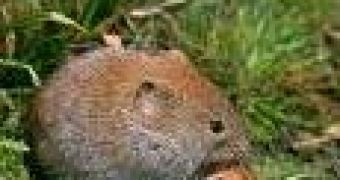Rodents are fast-evolving mammals and could be very useful in explaining human genetics and evolution.
Voles - hamster related rodents - are found in the Northern Hemisphere and are normally considered an agricultural pest.
Recently, a study was conducted at Purdue University on 60 species that have evolved in the last 500,000 to 2 million years. This means voles are evolving 60-100 times faster than the average vertebrate in terms of creating different species. These rodents are considered the fastest evolving mammals and an "evolutionary enigma" with many bizarre traits that could open new fields to gene therapy. Understanding the basis for these traits could lead to better understanding of the same phenomena in human genetics and genetic disorders, and could have implications for gene therapy, said Andrew DeWoody, associate professor of genetics in the Department of Forestry and Natural Resources.
Within the vole genus (Microtus), the chromosomes number ranges from 17 to 64, which is unusual, since mammalian species in a single genus often have the same chromosome number.
But other traits are really bizarre. In one species, the X sex chromosome contains about 20 percent of the entire genome (sex chromosomes normally contain much less information). In other species, females have large portions of the Y (male) sex chromosome. In another species, males and females have different chromosome numbers, which is uncommon in animals.
Another oddity is that - despite genetic variation - all voles look alike, said DeWoody's former graduate student and study co-author Deb Triant. "All voles look very similar, and many species are completely indistinguishable," DeWoody said.
Sometimes, two species can't be differentiated, even after close examination and analysis of their cranial structure; only genetic tests can show the difference.
Of course, voles perfectly recognize those of their own species. "I have seen absolutely no evidence of mating between different species," Triant said. "We don't know how they do this, but scent and behavior probably play a role."
DeWoody said, "The vole is a great a model system that could be used to study lots of natural phenomena that could impact humans."
The study focuses on the mitochondrial DNA. Triant's additional work explores the unique ability of voles' mitochondrial DNA to insert itself within DNA in the cell nucleus. The nuclear genome contains the vast majority of a cell's DNA.
"Deb's work in this area could potentially have some basic science impact on gene delivery mechanisms, such as those used in gene therapy," DeWoody said.
Gene therapy involves the insertion of a gene into human patients' cells, in order to counter some disease genetically determined, like hemophilia.
However, it is often difficult to insert the gene in the "correct" location, or a location where it does what it is supposed to do. A better understanding of the unusual prevalence of this activity in voles could be important for humans.

 14 DAY TRIAL //
14 DAY TRIAL //